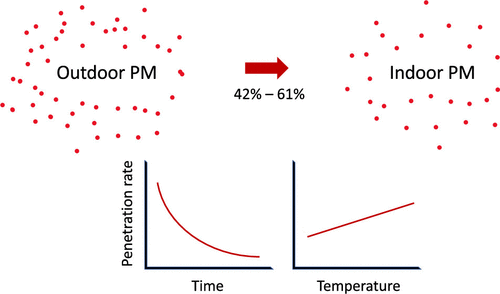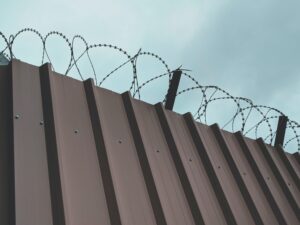Using hourly measures across a full year of crowd-sourced data from over 1000 indoor and outdoor pollution monitors in California, we explore the temporal and spatial relationship between outdoor and indoor particulate matter (PM) concentrations. We find that an increase in outdoor PM concentration of 10% leads to an average increase of 4.2–6.1% in indoor concentrations. We also provide evidence showing that penetration rates are associated with building age and climatic conditions. Since people spend a substantial amount of each day indoors, our findings have significant implications for government policies to improve public health through reductions in exposure to ambient air pollution.





